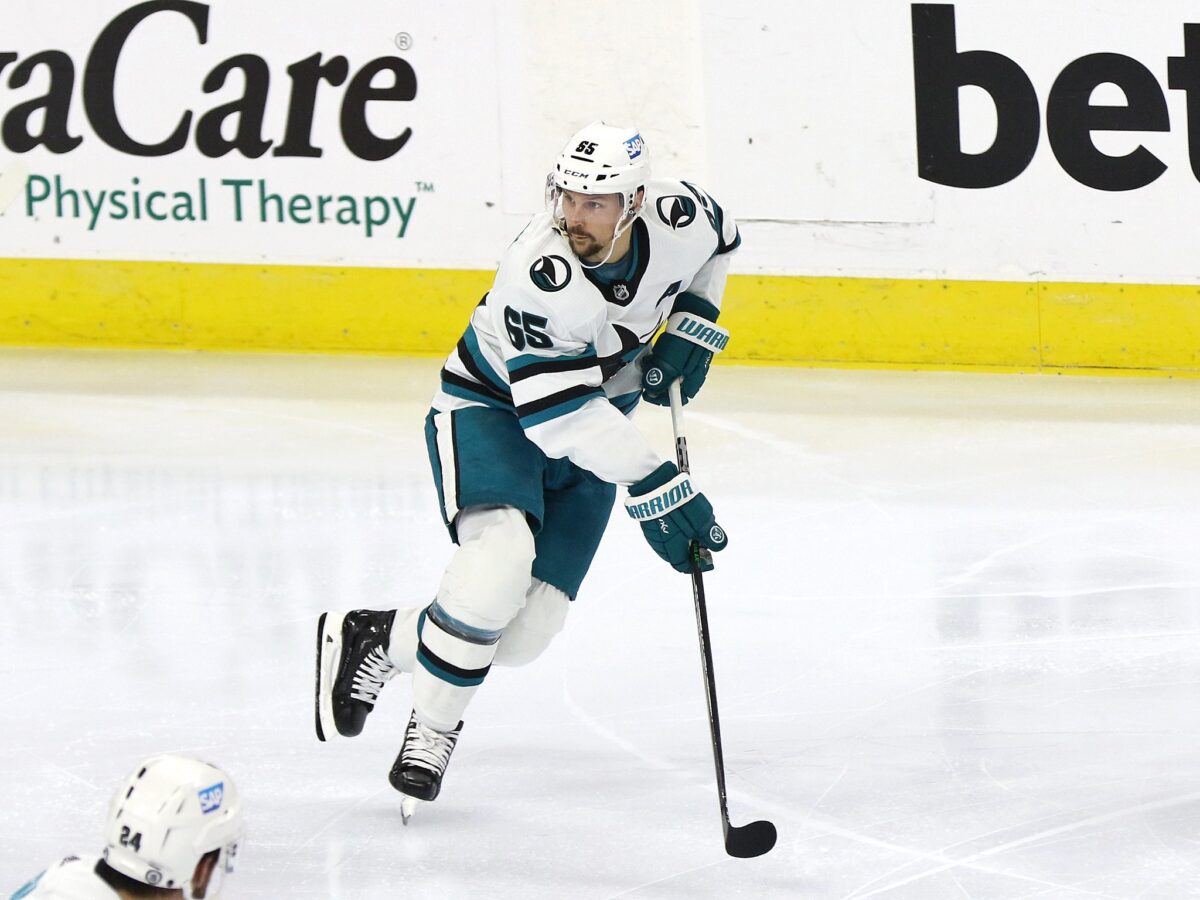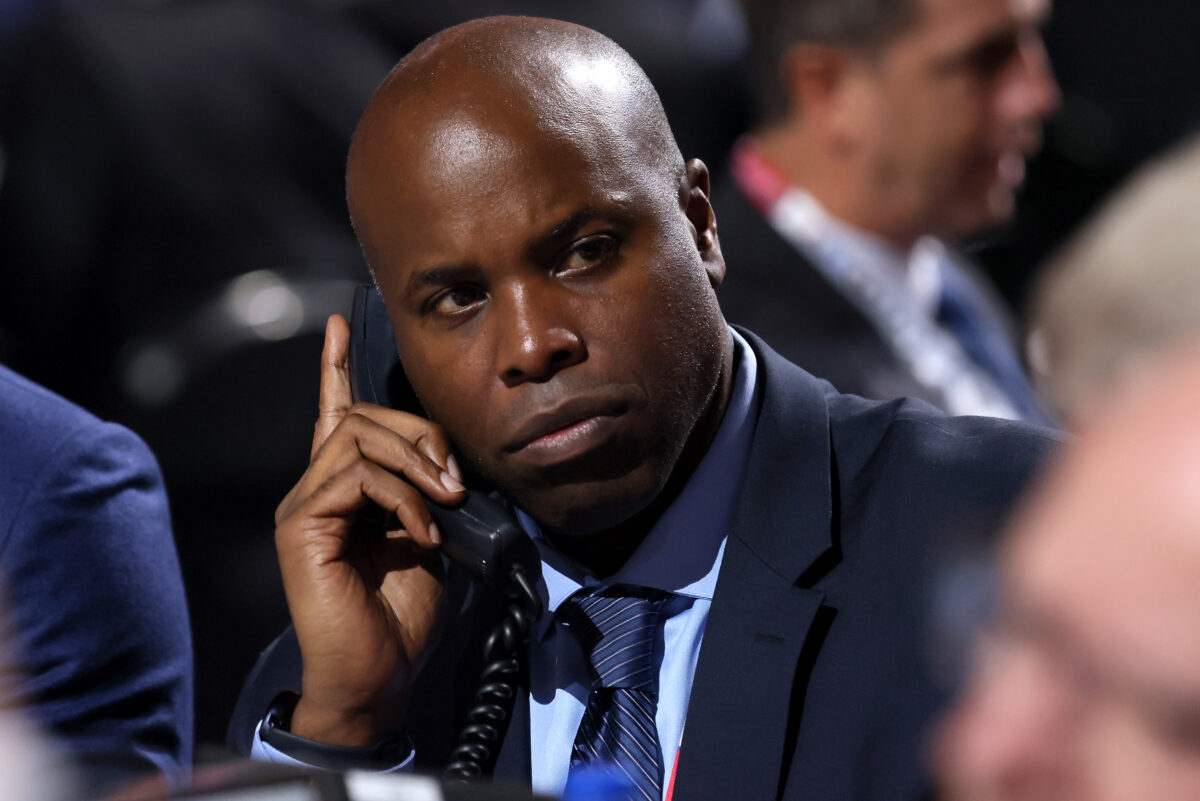After months of rumors and speculation, Erik Karlsson is finally leaving the San Jose Sharks. The reigning Norris Memorial Trophy winner is on his way to the Pittsburgh Penguins with some assistance from the Montreal Canadiens. The trade sees San Jose sending Karlsson, Dillon Hamaliuk, and a third-round pick in 2024 to Pittsburgh, who also gets Rem Pitlick from Montreal.
Meanwhile, the Sharks get the Penguins’ 2024 first-round pick, Mikael Granlund, Jan Rutta, and Mike Hoffman. Montreal, on the other hand, received four assets from Pittsburgh, a 2025 second-round pick, Jeff Petry, Casey Desmith, and Nathan Legare.
The Sharks were able to only retain $1.5 million on Karlsson’s cap hit as well, which is a win for the organization. Karlsson will undoubtedly be a significant piece for the Penguins as Kyle Dubas attempts to win once again with Sidney Crosby and Evgeni Malkin before they retire. The Sharks will miss his scoring from the blue line, but it does allow them to start over, which is something they desperately need. As for Sharks general manager Mike Grier, he has to be glad that this is completed so he can turn his attention elsewhere.
The Sharks’ Additions
Overall, the Sharks’ return for a three-time Norris Trophy winner is underwhelming but expected given the circumstances. They received three aging players to make the salary cap restrictions work, but importantly, they did get a first-round draft pick in next season’s draft. Karlsson will certainly improve the Penguins if he stays healthy, but without him last season, they did miss the playoffs. As a result, there’s a chance that it ends up being a lottery pick next season. But considering it’s top-10 protected, that likely wouldn’t benefit the Sharks since it’ll probably be in the latter half of the draft regardless.
The players that San Jose brought in are certainly past their prime, but they’re serviceable in their own right. The main reason they were involved was due to Grier’s strong desire to not retain an abundance of salary on Karlsson’s massive contract. Granlund was actually playing relatively well for the Nashville Predators before getting traded to Pittsburgh. He’s a playmaker, which will actually be beneficial for the Sharks’ middle-six forward core. His versatility will also allow for movement around the lineup, as he can play both center and on the wing.
Considering the other additions the team has made this offseason, Granlund could very well find his footing once again in the Bay Area. Either way, the 31-year-old currently has two years left on his contract with an average annual value (AAV) of $5 million per season, so even if things weren’t to work out, the Sharks would get cap relief fairly quickly.

Hoffman isn’t the same player from his time with the Ottawa Senators and the Florida Panthers. Age has caught up with the 33-year-old, who will turn 34 in November. He’s unable to put up 25 goals, nor will he be producing 60 or more points at this point in his career. His time in Montreal showed that he’s going to put roughly 15 pucks in the back of the net and get roughly 20 assists a season at this point in his career.
For a bottom-six player, that’s decent production, but his lack of defensive skill and physicality make him mostly impractical for that type of role. He only has a single year remaining on his deal, which carries an AAV of $4.5 million, so if he does perform well, the Sharks can bring him back fairly cheap in 2024-25. But at this point, I’d say that’s fairly unlikely.
Related: Sharks’ Return for Karlsson Will Determine Future of Organization
Rutta isn’t much more than a body to fill the hole left by Karlsson in this trade. He’s a defensive-minded defenseman who can very rarely contribute offensively, though he does also have a habit of turning the puck over in his own zone. He’ll be a decent player on the bottom pairing for the Sharks, as he does bring a bit of physicality and is not afraid to jump in front of an opposing player’s shot. But he’s not going to replace Karlsson by any means. He currently carries an AAV of $2.75 million for the next two years.
Why Grier Made This Trade
On paper, the return doesn’t seem like much for the Sharks. A few aging veterans with inflated contracts who may contribute a bit but aren’t going to even come near replacing the production of the player being sent the other way. Of course, the first-round pick is definitely a valuable asset for next June, but that alone doesn’t seem to make up the value associated with the reigning Norris Trophy winner.
Karlsson’s age and contract made him difficult to move, and the fact that he has spoken to the media about his desire to leave San Jose before next season gave Grier even less leverage to make a deal. This is a situation where management had to make the best out of a very bad situation, and fortunately, they were able to do so somewhat successfully.

Cap space is also a valuable asset, and although the Sharks are actually closer to the cap now than they were prior to the trade, they’ll get over $12 million cleared up within the next two seasons. If they had kept Karlsson, they’d be on the hook for his $11.5 million AAV for the next four seasons. It gives the organization more flexibility sooner than later, which will be beneficial when players like Thomas Bordeleau and William Eklund are ready for a big payday in a few seasons.
The return does bring some questions to the forefront, though. The Sharks are undoubtedly a worse hockey team with their current roster than they were before the trade. It’s worth wondering if this will have implications for veterans like Logan Couture and Tomas Hertl, who aren’t going to have many more opportunities to compete for a Stanley Cup.
The Sharks made the best of a terrible situation and got a first-round pick and a few players they may be able to retain salary on and flip at a future trade deadline for some more future assets. Overall, this trade likely won’t be looked back on fondly by Sharks fans, but it gives the organization a chance to move forward and look toward the future.
